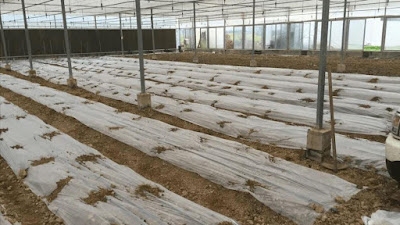What Is Agricultural Mulch?
Mulching technology is a breakthrough invention made by mankind in the field of agriculture. Invented and applied by Japanese scientists in the 1950s, it was first used for strawberry production. In June 1978, Zhu Rong, the then deputy minister of the Ministry of Agriculture, after visiting Japan and returning to China, introduced the Japanese plastic film mulching technology to the relevant units, and requested to carry out relevant research, thus starting the research and application of China's plastic film mulching technology.
The mechanism of action of plastic film mulching is to effectively improve the growth and development conditions of crops, resist adverse environments, and make full use of Limited light, heat, water and nutrients promote the germination of seeds into the soil, accelerate the growth of roots and shoots, and prolong the effective growth period, so as to obtain the good effects of early maturity, high yield and high quality. Under normal circumstances, mulching with plastic film can increase the average ground temperature during the crop growth period by 3-6°C, increase the accumulated temperature by about 300°C, increase the soil water content of 0-20 cm by 2.6-3. improve.
Plastic film mulching is a crucial agricultural operation in the process of greenhouse production, and it has played a huge role in regulating ground temperature, retaining water and fertilizer, inhibiting weed growth, and reducing diseases. However, not all vegetable farmers use plastic film well, and the method of plastic film mulching is unreasonable, which will have a great impact on the growth of vegetables, and even affect the yield in the later period.
The role of plastic mulch film
1. The positive effect of agricultural mulch
Increase soil temperature - increase the effective accumulated temperature, the growth period is relatively prolonged, and the yield is increased (different colors have different warming effects, colorless plastic film has the best warming effect, and silver-gray basically does not heat up)
Conserve soil moisture (moisture retention) and reduce water waste
Maintain soil structure (mulch the surface to protect the topsoil, which can reduce wind and water erosion)
Keep soil loose (mulch will reduce rain slapping and prevent soil from compacting)
Improve lighting conditions (mulch film and water droplets under the film reflect sunlight)
prevent pests
Improve soil fertility. After mulching, the loss of nitrogen fertilizer in the soil in the form of volatilization is greatly reduced, so that nitrogen fertilizer can be maintained. As ground temperature rises, microbial activity increases, increasing soil organic matter
Improve crop quality, achieve early maturity and increase income
Drought and waterlogging
Suppresses weeds (black mulch works best)
Suppressing salt and protecting seedlings, preventing soil salinization
Shifting the suitable areas for various crops to the north, thereby making more efficient use of land resources
2. Negative effects of plastic mulch
Plastic film is difficult to degrade and remains in the soil causing pollution
Although mulching has the function of water retention, it also prevents the external precipitation from entering the ridge. If it encounters continuous rainfall, it will cause serious water damage, which will deteriorate the permeability of the soil and hinder the evaporation of water.
Affect soil moisture infiltration, water content, permeability
hinder the movement of water and fertilizer
Residual film causes soil compaction
Cause the root growth and development of crops difficult, affecting the normal growth and development.
The main function of mulch film in different regions
1. In arid and water-deficient areas: water conservation and drought resistance are the main measures to improve low temperature.
2. In low temperature and cold places with short frost-free period: mainly to increase ground temperature and prolong effective growth area
3. In rainy and high temperature areas: mainly to prevent waterlogging and prevent soil nutrient leaching and loss





No comments:
Post a Comment